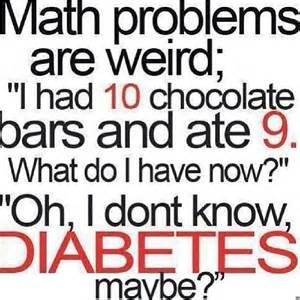Maths and Play
In our lecture we discussed some reasons of importance of play when teaching mathematics. Some of which included:
- Enabling children to experiment
- Providing meaningful context
- Promoting social learning
- Encouraging creative and flexible thinking
All of these reasons would be helpful in any area of learning so why are we so focused on making maths fun?
Maths is so deeply embedded in our society that if from an early age if it seems too difficult, boring or irrelevant and a person switches off from it then this may have consequences for their future. Therefore, the early experiences need to be positive ones, as do the latter, however in order to stamp out any anxieties especially, the early experiences must be positive ones.
Are we disguising what CfE wants all learners to do which is “opportunities for communication, discussion and explanation of thinking” (Scottish Government, 2009, p 189) by calling it play or is what is described above is actually play. Reading that quote does not first bring play to mind for me. However, I think sitting at a desk, being didactically taught new concepts is exactly how our curriculum is designed not to be taught. As a former maths textbook enthusiast (as a pupil not as a student teacher) this is the complete opposite of what is described in CfE so play or whatever you think it should be called has its place as was proved to me in some maths lectures we’ve had for this module so far.
In one game we had to describe to our partners a shape that was on a card. This proved to be quite difficult to explain but easier as the person trying to figure out the shape. I first started by describing whether it was a 2D or 3D shape then could move on to how many faces (sides) t he shape had. Haylock and Manning suggest the importance of experiencing this type of game (naming, sorting) are components of young children’s play which lay foundation for genuine mathematical thinking through the classification. This type of game could be used with children to consolidating different types of shapes e.g. square and triangles and then used as a building block to understand new concepts such as equilateral and isosceles triangles or being able to distinguish between 2D and 3D shapes.
he shape had. Haylock and Manning suggest the importance of experiencing this type of game (naming, sorting) are components of young children’s play which lay foundation for genuine mathematical thinking through the classification. This type of game could be used with children to consolidating different types of shapes e.g. square and triangles and then used as a building block to understand new concepts such as equilateral and isosceles triangles or being able to distinguish between 2D and 3D shapes.
Another task in a different lecture we were asked to complete was to find a formula for how many snaps of chocolate to break a bar in singular pieces of chocolate. The thought of doing this on my own was a bit daunting especially when the word “formula” comes up. You think it will be complicated. 
However, as we got to work together as a group on this task, had props to help us and it was relatable as we could all imagine the blocks we had were actually chocolate this was a relatively easy task.
I think the four areas of Lipping Ma’s profound understanding of maths are promoted in these games or come through at some points.
Interconnectedness (how mathematics topics depend on each other). Simply as, in order to understand and describe 3D shapes we needed to know the properties and characteristics of 2D shapes such as squares, rectangles, circles.
Multiple perspectives: In a group setting we were able to approach mathematical problems in different ways. This was shown in the formula challenge with chocolate. With six in a group it was difficult to for one person’s idea to be the same as everyone’s. The ability to look at this problem with a flexible approach was important but something that we all did. This again links to what is promoted in CfE as mentioned above where emphasis on explanation of thinking is important.
Basic ideas (or principles) e.g. ordering, place value, commutativity, etc. The mathematical language we used to describe the properties of the shape links to basic ideas described as we need to know the basic characteristics in order to describe a shape.
Longitudinal coherence: that one basic idea or principle builds on another. i.e. the understanding and properties of 2D shapes must be understood before moving on to 3D shapes.
The four ideas of Lipping Ma may seem boring (sorry!) when written out. However, experiencing maths games and linking it to these four ideas, they are more simplistic and obvious than I first initially thought. There were many opportunities for discussion and explanation of our thinking and we did have fun doing these tasks/games. I would not say that just by playing these games you will profound understanding of fundamental mathematics (PUFM). Lipping Ma describes PUFM having breadth, depth and thoroughness which goes much deeper than the four ideas. Although I was able to explain my own thinking and appreciate others perspectives, the ability to not only find a new way but to explain new procedures to a student who wasn’t understanding something is not something I feel I could do confidently at this stage. The thoroughness of my understanding of PUFM is not quite there yet.
References
Haylock, D. (2010) Mathematics explained for primary teachers. 4th edn. London: SAGE Publications
Ma, L. (2010) Knowing and teaching mathematics: Teacher’s understanding of fundamental mathematics in China and the United States. 2nd edn. New York: Taylor & Francis
Scottish Government. (2009) Curriculum for excellence, experiences and outcomes for all curriculum areas. Available at: http://www.educationscotland.gov.uk/Images/all_experiences_outcomes_tcm4-539562.pdf

